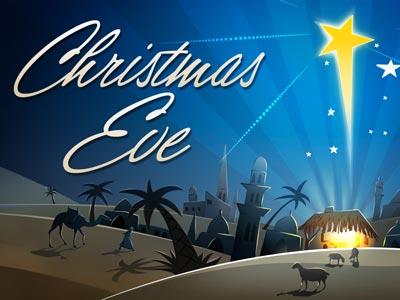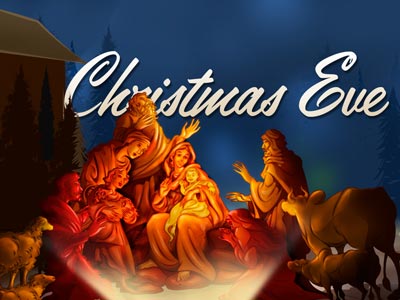-
Ever Ready Series
Contributed by Freddy Fritz on Nov 28, 2017 (message contributor)
Summary: How do we live ever ready fo the advent of Jesus in the 21st century? Today’s text guides us in recalibrating our lives in light of Jesus’ priorities.
Scripture
In many churches, the several weeks prior to Christmas are known as Advent, from the Latin word meaning, “coming.” This preparatory season always begins on the fourth Sunday before Christmas. Thus, today is the First Sunday of Advent.
The observance of the season of Advent can be traced to the late fifth century in Italy and Gaul, and perhaps a bit earlier in Spain. Let me mention several features of Advent worth noting.
First, the First Sunday of Advent is regarded by many churches as the first Sunday of the Christian Year. Robert Webber, in his book titled The Services of the Christian Year, defines the “Christian Year” as the way in which the church “celebrates the saving events of God in Jesus Christ by marking those particular events in which God’s saving purposes were made known.” Regarding the Christian Year, Webber notes:
The most common term for the yearly celebration of time in worship is the Christian year. The Christian year, developed in antiquity, was a vital part of worship until the Reformation, when Protestants abandoned much of it because of the abuses attached to it in the late medieval period. Protestants claimed that nearly every day of the year had been named after a saint. The emphasis on these saints and the feasts connected with their lives overshadowed the celebration of the Christ-event in the more evangelical pattern of Advent, Christmas, Epiphany, Lent, Holy Week, Easter, and Pentecost celebrations. Consequently Protestants discontinued observing the Christian year and lost its positive aspects as they attempted to remove Roman excesses. The current return to the Christian year among Protestants advocates a very simple and unadorned year that accents the major events of Christ, a Christian year similar to that of the early church.
The alternate (and, unfortunately, more common) way of shaping the church’s worship today is by using the “Hallmark” calendar: Advent, Christmas, Good Friday, Easter, Mother’s Day, Father’s Day, Independence Day, Grandparent’s Day, Memorial Day, Labor Day, and so on. Clearly, the better way, it seems to me, is to use the historic pattern of the Christian Year.
Thus, the Christian Year begins with Advent. Advent is a time to anticipate the birth and incarnation of Jesus Christ. Historically, however, Advent is not just the season of anticipation but the season of penitential preparation for the coming of Jesus Christ.
Second, as a time for the preparation for the birth and incarnation of Jesus Christ, the Scripture readings during Advent have traditionally given special attention to prophecy, with a strong emphasis on repentance, as we will note in our Scripture readings.
Third, many churches use an Advent wreath during the season of Advent. The wreath lies horizontally and is adorned with five candles. The candles often have different symbolic meanings. One of the views is that the outer four candles symbolize the four millennia covered in the history of the Old Testament, and the inner candle represents the birth and incarnation of Jesus Christ. Perhaps the more common view is that the outer four candles symbolize hope, love, joy, and peace, and the inner candle represents the birth and incarnation of Jesus Christ, the light of the world.
Fourth, the traditional liturgical color for the season of Advent is purple. The color purple represents royalty (for the coming of the King) and also penitence (as befits a season of renewed repentance).
And fifth, because of the emphasis on repentance as the proper preparation for the coming of God, Advent is actually a season of great seriousness rather than great festivity. Historically, the season of Advent was a somber, reflective, repentant season in which God’s people look forward to the time when God comes to his people in the person of his Son, Jesus Christ. Christmas Day was the start of the festive time, which traditionally lasts the twelve days of Christmas, from December 25 to January 6. Christians in earlier centuries would be surprised at the current emphasis on festivities prior to December 25.
Now, it is my intention to spend the four Sundays of Advent this year looking at one of the Scripture Readings which are read during the first four Sundays of the Christian Year.
Today’s text is found in Luke’s Gospel, in a section where Jesus foretells the destruction of the Temple and Jerusalem (21:5-24), and also foretells his second coming (21:25-38).
Let’s read Luke 21:25-36:
25 “And there will be signs in sun and moon and stars, and on the earth distress of nations in perplexity because of the roaring of the sea and the waves, 26 people fainting with fear and with foreboding of what is coming on the world. For the powers of the heavens will be shaken. 27 And then they will see the Son of Man coming in a cloud with power and great glory. 28 Now when these things begin to take place, straighten up and raise your heads, because your redemption is drawing near.”

 Sermon Central
Sermon Central



